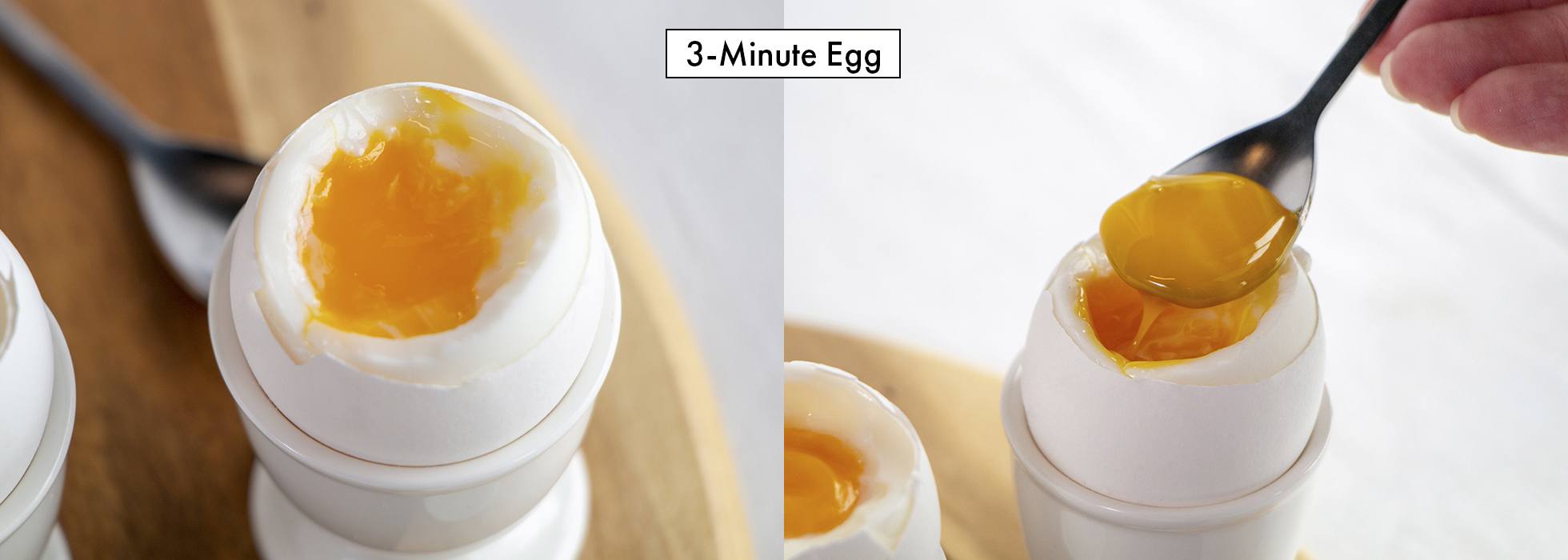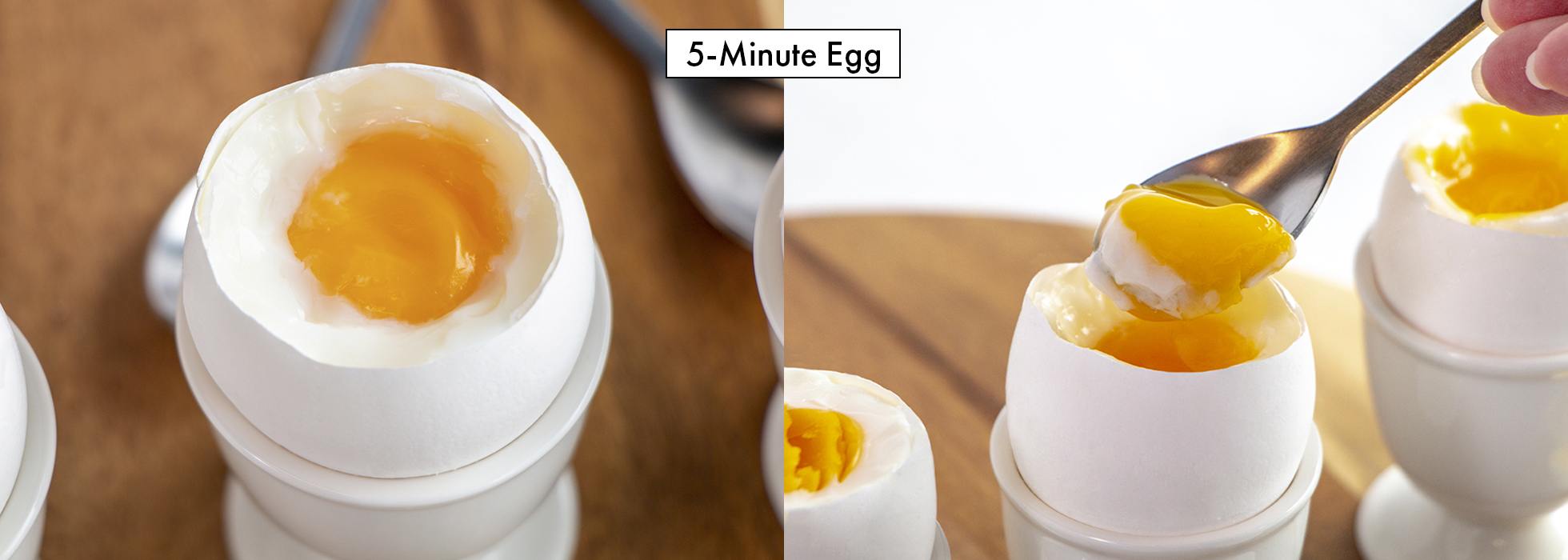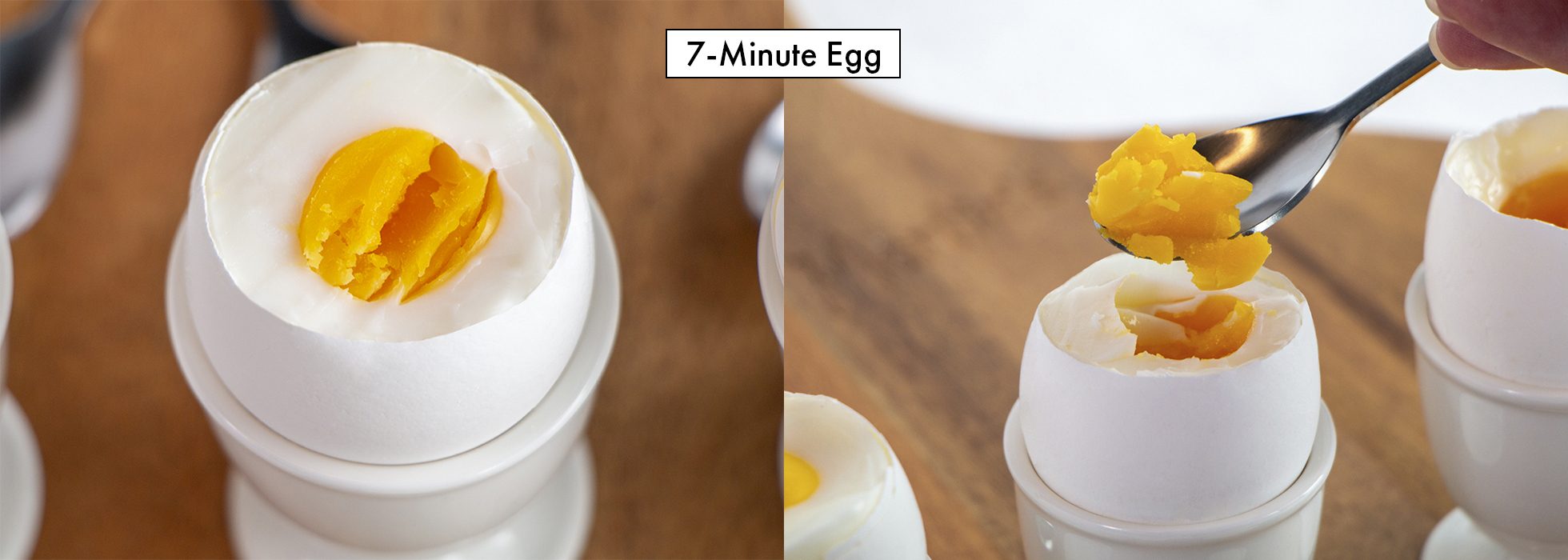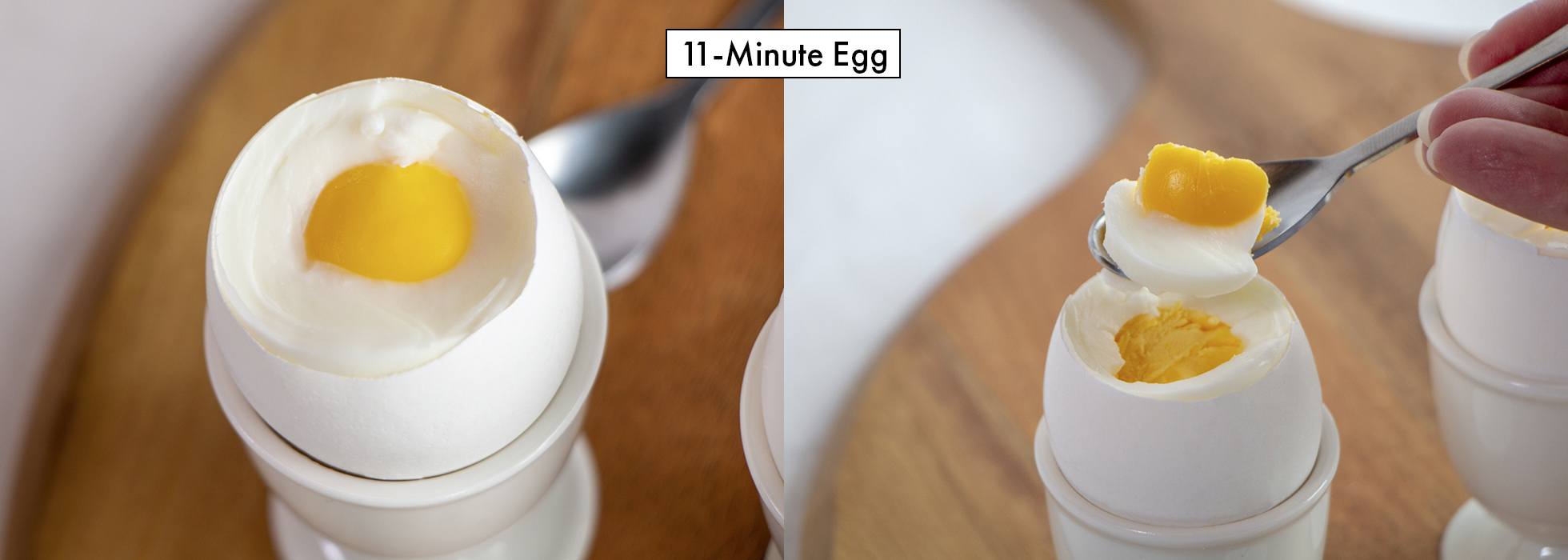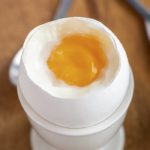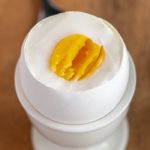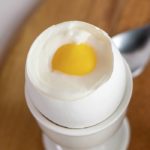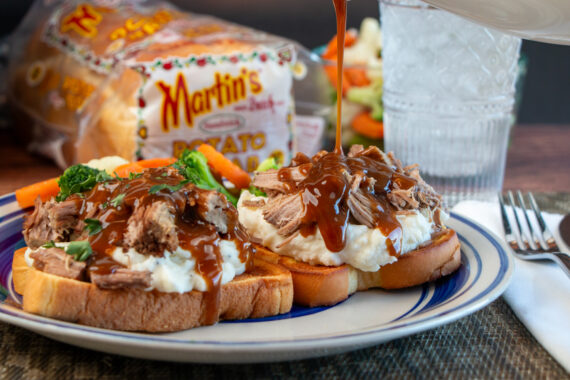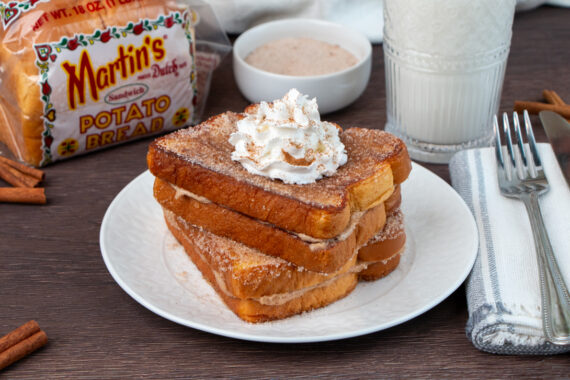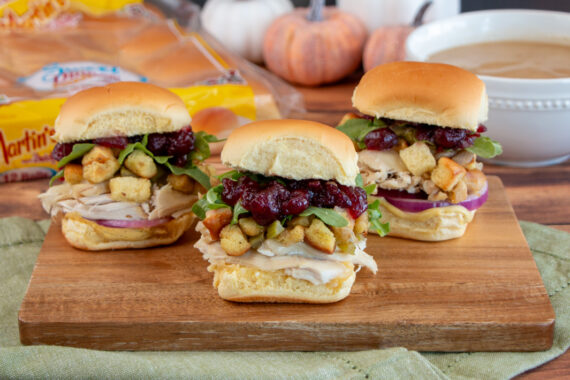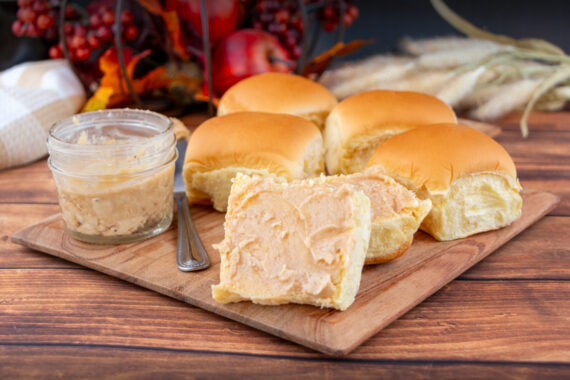Eggs are a crucial ingredient in so many foods. Not only are they an essential in many baked goods and sauces, they are delicious by themselves—in a wide variety of forms—for breakfast, lunch, and dinner. This is one of the reasons why learning the different ways to prepare eggs is so important for every type of chef, from the novice to the seasoned professional.
Fine-tune your culinary skills with our Complete Guide to Eggs.
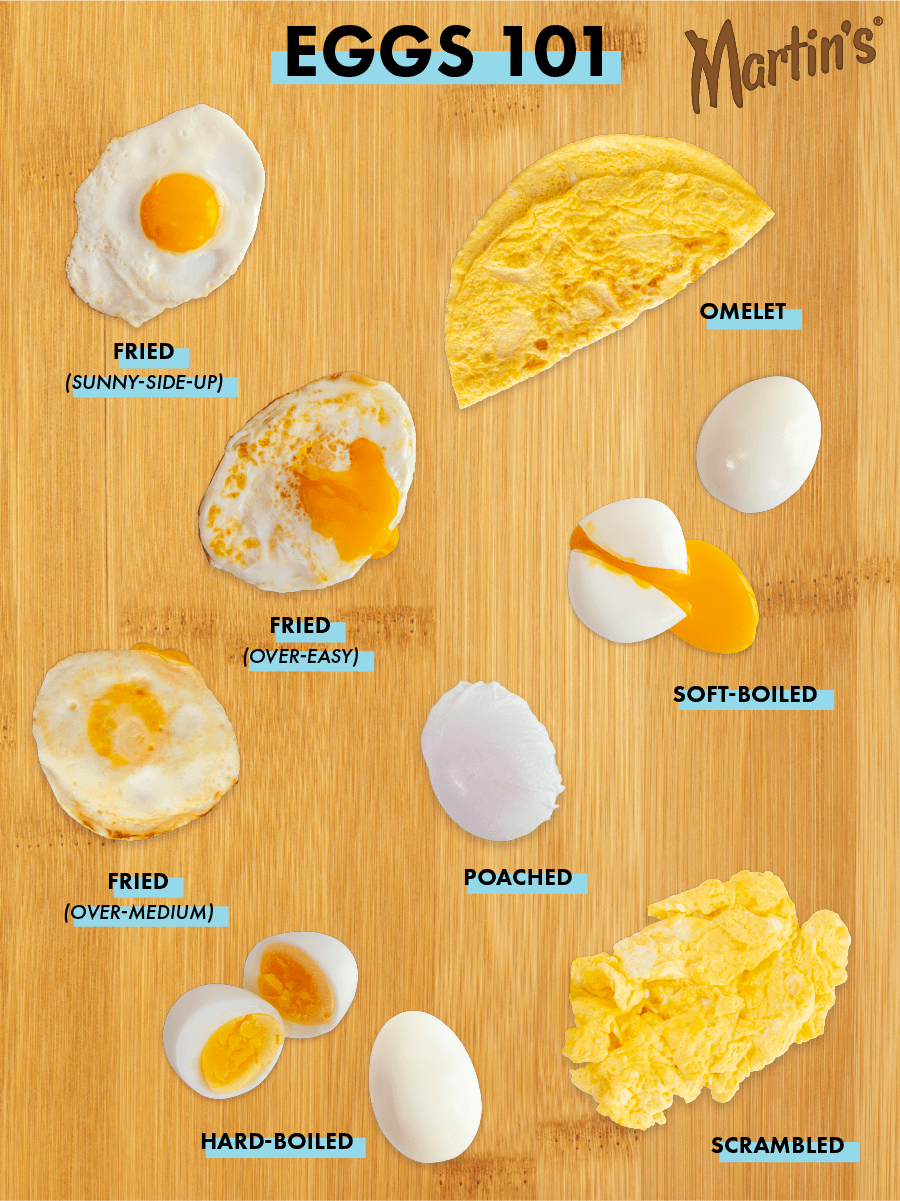
The Complete Guide to Eggs
Click the links below to skip to the various sections:
-
- Scrambled
- Omelet/Frittata
- Fried
- Basted
- Boiled
- Featured Recipe: Smashed Eggs (Soft-Boiled Eggs Over Toast)
- Poached
- Featured Recipe: Classic Eggs Benedict
- Baked/Shirred
Scrambled Eggs
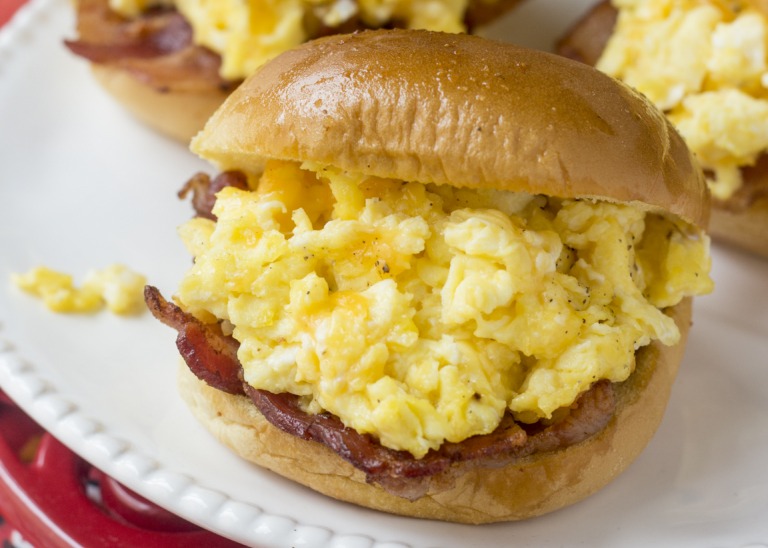
This is one of the most foolproof methods of preparing eggs. If you accidentally break an egg or ruin an omelet, just scramble it up and voilà! Plus—you can use scrambled eggs for all sorts of breakfast dishes, from sandwiches to hashes, and also mix in any ingredients you like such as sautéed veggies or cheese to make it your own.
Did you know there are actually several different techniques for making scrambled eggs? Just like with boiled eggs (see below), you can actually have soft-scrambled or hard-scrambled eggs. This refers to the consistency or “doneness” of the eggs, i.e., how cooked through they are. Some people prefer slightly softer scrambled eggs since they can tend to get dry if cooked for too long.
Many chefs also have their own special tips for preparing scrambled eggs. Check out a few of them below!
Tips for Scrambled Eggs
- Try adding milk or cream to your eggs prior to whisking for extra fluffy eggs.
- Chef Gordon Ramsay has a very unique way of preparing scrambled eggs. He suggests cracking the cold eggs directly into a sauce pan along with some butter, and then continuously stirring (not whisking) with a rubber spatula, while alternating time on and off the heat source. See a video tutorial here: https://www.youtube.com/watch?v=PUP7U5vTMM0.
Scrambled Egg Recipes
- Cheesy Scrambled Eggs & Bacon Breakfast Sandwich (pictured above)
- Breakfast Bowls
- Breakfast Dog
Omelets & Frittatas
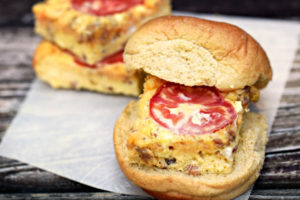
Both of these preparations involve whisking the eggs first (similar to scrambled), and then adding to a skillet along with other ingredients. However there are a few key distinctions.
Omelets are typically made by cooking a flat layer of eggs until they are mostly cooked, then adding optional ingredients and folding the egg layer over. An American-style omelet is generally folded in half with the ingredients in the middle, and the eggs cooked through well. A French-style omelet is cooked more on the softer side and rolled into a cylinder with optional fillings inside.
Frittatas are essentially the Italian version of an omelet, with the crucial difference of the fillings being added while the eggs are still raw. The entire mixture then cooks together in a high-sided skillet into a fluffy quiche-like dish. Once the frittata is mostly cooked through, it can either be flipped and fried on the other side or baked in the oven to finish cooking the eggs.
Tips for Omelets & Frittatas
- For a 2-egg omelet, use an 8-inch skillet. For a 3-egg omelet, use a 10-inch or larger skillet. You want the eggs to be in a fairly thin layer and fill the surface of the pan so they cook consistently and evenly.
- Cook over medium heat (or lower for frittatas) to ensure the bottom does not cook too quickly.
- For an American-Style Omelet: Once the bottom layer is mostly solidified, try gently lifting one edge and tilting the pan to allow the still raw eggs on top to run underneath and begin to cook.
- For a French-Style Omelet: Add milk or cream to the eggs to make them fluffier. Once added to the pan, stir the mixture vigorously until just starting to set, then let cook. Remove from heat when the eggs are still soft and slightly wet; French omelets usually do not have any browning.
Omelet & Frittata Recipes
- Oven-Baked Frittata Breakfast Sandwiches (pictured above)
- Omelet Toast Cups
- Griddled Maple Breakfast Sandwich
Fried Eggs
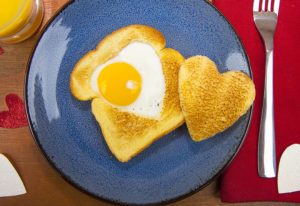
Ah—fried eggs; everyone’s favorite breakfast sandwich filling, brunch plate companion, and occasional burger topping! Since there are so many ways to cook a fried egg, we’ll start with some definitions.
Types of Fried Eggs
- Sunny-Side-Up: Fully cooked egg whites with still-runny yolks. No flipping.
- Over Easy: Fully cooked egg whites with still-runny yolks. Flipped once and cooked just until remaining egg whites set.
- Over-Medium: Fully cooked egg whites with moderately-runny yolks. Flipped once.
- Over-Hard: Fully cooked egg whites with fully cooked yolks. Yolks are typically broken first.
- “Dippy Eggs”: Any method where the yolks are still runny; i.e., sunny-side-up or over-easy (or even soft-boiled).
Fried Egg Recipes
- Eggs in a Basket (pictured above)
- Pork Roll, Egg, and Cheese Sandwich
- Lamb & Egg Burger
Basted Eggs
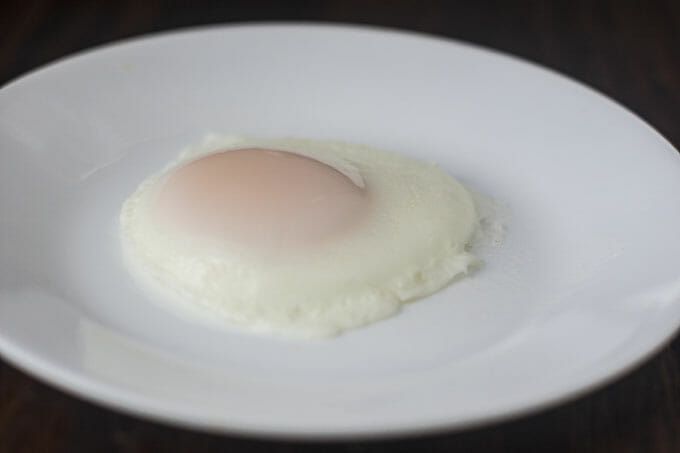
Image from thecookful.com
This interesting technique may be unfamiliar to you, but it’s a great option for those who love over-easy or sunny-side-up eggs but have trouble cooking them to their liking. The concept is easy (and just like the name implies)—crack the egg into a skillet with melted butter (or oil) and baste the egg with liquid once it is mostly cooked on the bottom. This helps to finish cooking the top layer of egg whites without having to flip the egg. Check out some variations below:
Types of Basted Eggs
- Butter-Basted Eggs: When the eggs whites are mostly cooked, melt more butter in the pan (if needed) and spoon the melted butter over the top of the egg until the top is set. (You can also use this technique with olive oil.)
- Water-Basted Eggs: When the egg whites are mostly cooked, add a bit of water to the pan and cover with a lid to allow to steam, until top is set.
Basted Egg Recipes:
- Steam-Basted Eggs (from: The Cookful)
- Butter-Basted Eggs (from: The Kitchn)
Boiled Eggs
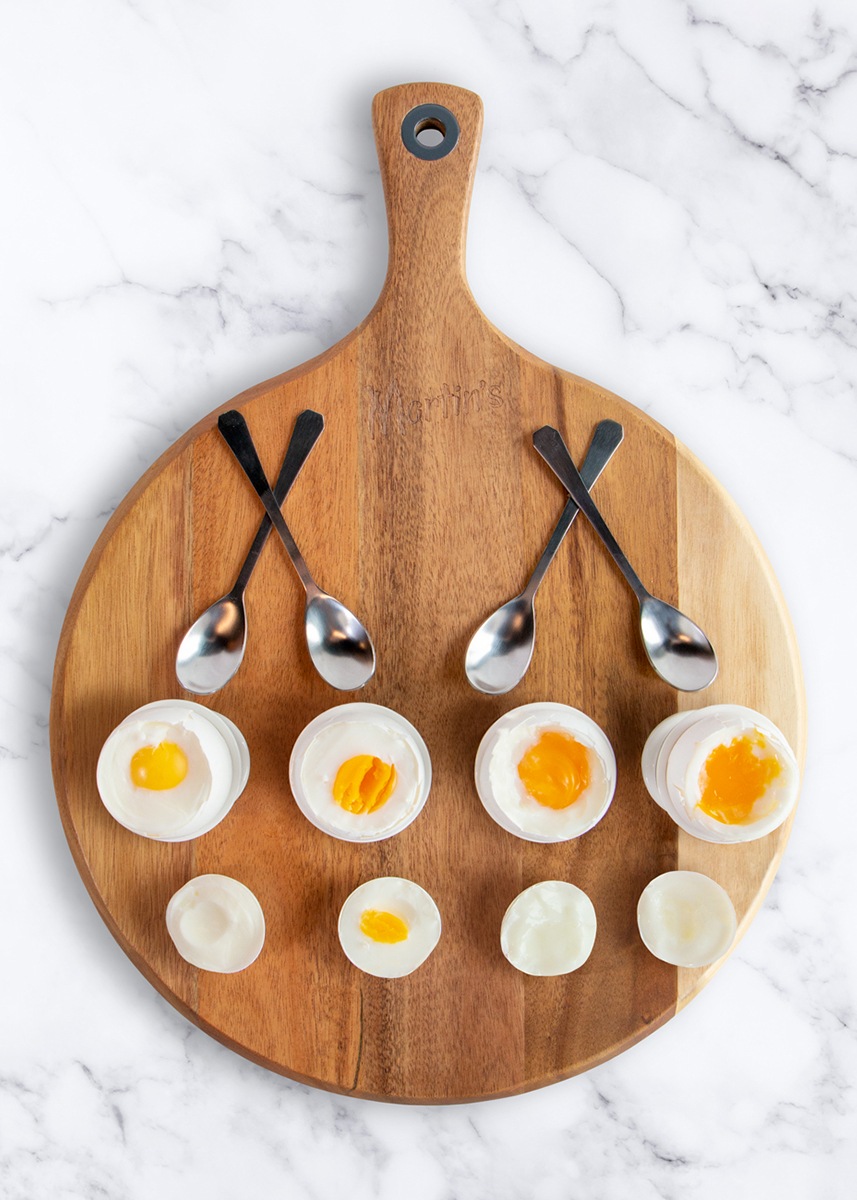
This may be one of the simplest methods of cooking eggs, but there is still some skill involved. The cooking time, for instance, depends on how “done” you like your eggs. Do you prefer them hard-boiled or with the yolks a bit on the runny or “jammy” side?
Hard-boiled eggs are perfect for making deviled eggs or egg salad sandwiches, adding to a cobb salad, or just by themselves as a quick breakfast or midday snack.
Soft-boiled eggs, on the other hand, are a popular addition to soups and noodle dishes or cracked open and used to dip toast into.
Soft-Boiled Egg Tutorial:
Watch this quick how-to video to learn how to make a soft-boiled egg! Shown here is a 4-minute egg. Adjust the time according to your liking. For an example of the egg topper and serving dishes used here, check out the tips section below.
How to Make Perfect Soft-Boiled or Hard-Boiled Eggs:
- Soft-Boiled Eggs: Add eggs to boiling water and cook for 5-7 minutes; transfer to ice water to stop from cooking.
- Hard-Boiled Eggs: Add eggs to boiling water and cook for 7-10 minutes; transfer to ice water to stop from cooking.
It’s that simple! Give it a try and adjust the time according to your liking. Take a look at the below graphic representing various cooking times to see a side-by-side comparison.
Click on the images above or the below thumbnails to get a closer look!
Featured Recipe: Smashed Eggs {Soft-Boiled Eggs over Toast}
Soft-boiled eggs are the boiled equivalent of over-easy fried eggs; they have a fully cooked white and a still-runny yolk that makes them perfect for dipping toast into. Try this delicious preparation: take a 4-5 minute boiled egg, place it atop some buttered Martin’s bread, and gently break it up with a butter knife as you “smash” it around the toast. Finish off with a bit of sea salt and freshly cracked pepper, and you have a quick and delicious breakfast!
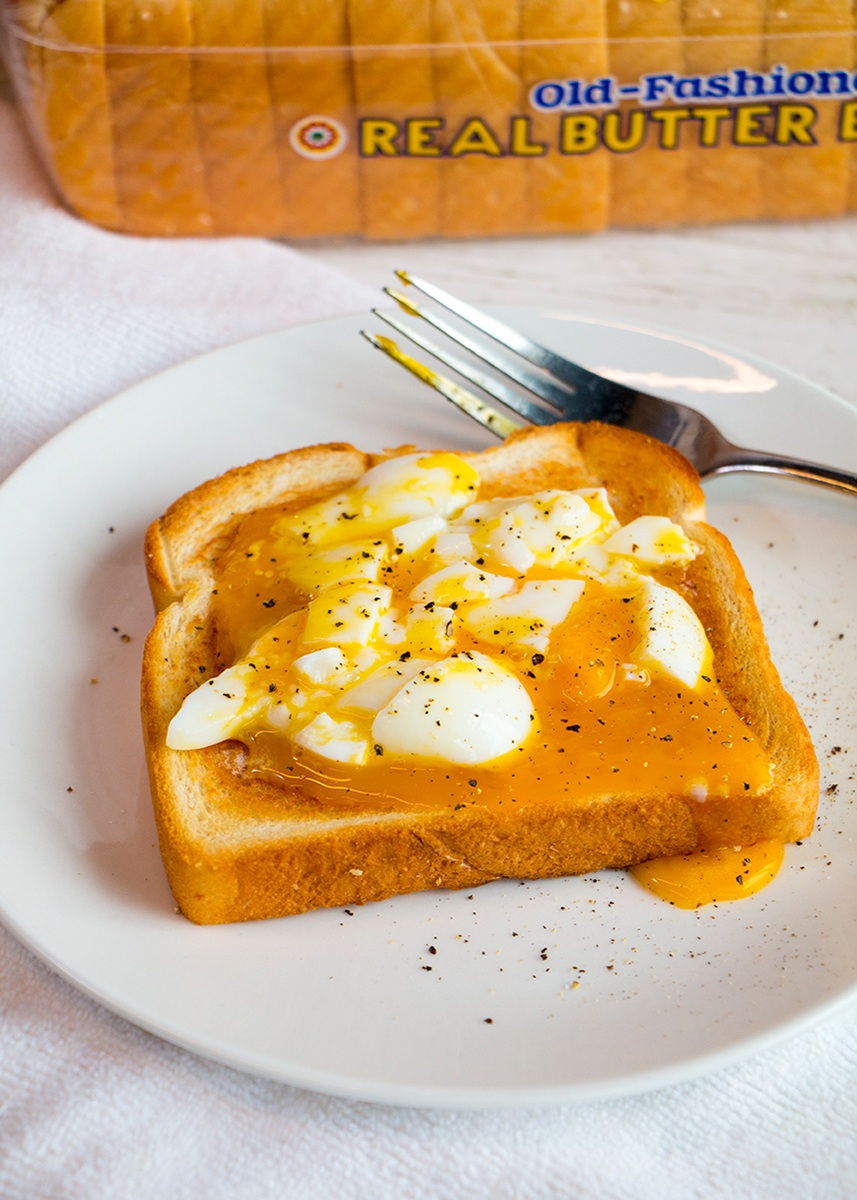
View Full Recipe: https://potatorolls.com/recipes/smashed-eggs
Tips for Boiling Eggs
- Try adding a bit of vinegar to the boiling water to make the eggs easier to peel.
- Transfer boiled eggs immediately to ice water to stop them from cooking.
- Looking for an easy way to crack and serve soft-boiled eggs? Try a tool like this one that comes with an egg cracker topper and serving dishes and spoons.
- For a very technical explanation, including side-by-side comparisons, of different methods of boiling eggs, check out Serious Eats’ The Food Lab: How to Make Perfect Hard-Boiled Eggs.
More Boiled Egg Recipes
- Egg Salad Gribiche
- Pickled Egg Salad Crostini
- Cobb Salad Bread Bowls
- Jammy Soft-Boiled Eggs (from Bon Appetit)
Poached Eggs
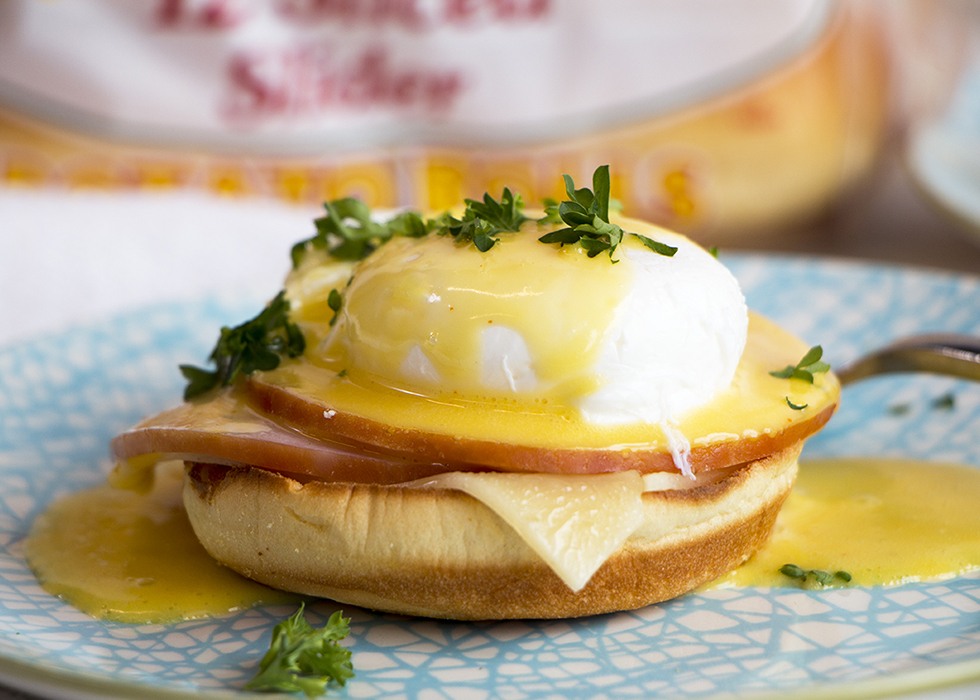
Poached eggs are basically boiled eggs without the shell, usually resulting in a similar consistency to soft-boiled eggs. However, they can be quite difficult to master. (See below for some helpful techniques.) This is a great preparation method to learn, especially if you enjoy classic brunch dishes like the one below!
How to Poach an Egg
Watch this quick how-to video to see how to make a poached egg! (Timer set for 3 minutes.)
Featured Recipe: Classic Eggs Benedict
Every home cook should have this basic recipe in their culinary tool belt. Once mastered, eggs benedict is a simple yet fancy recipe perfect for Sunday brunches and special occasions! To prepare, place a 3-minute poached egg onto a toasted and halved Martin’s Slider Roll along with cheese and Canadian bacon. Top with prepared hollandaise sauce (emulsified egg yolks, lemon juice, melted butter, and cayenne pepper) and serve!
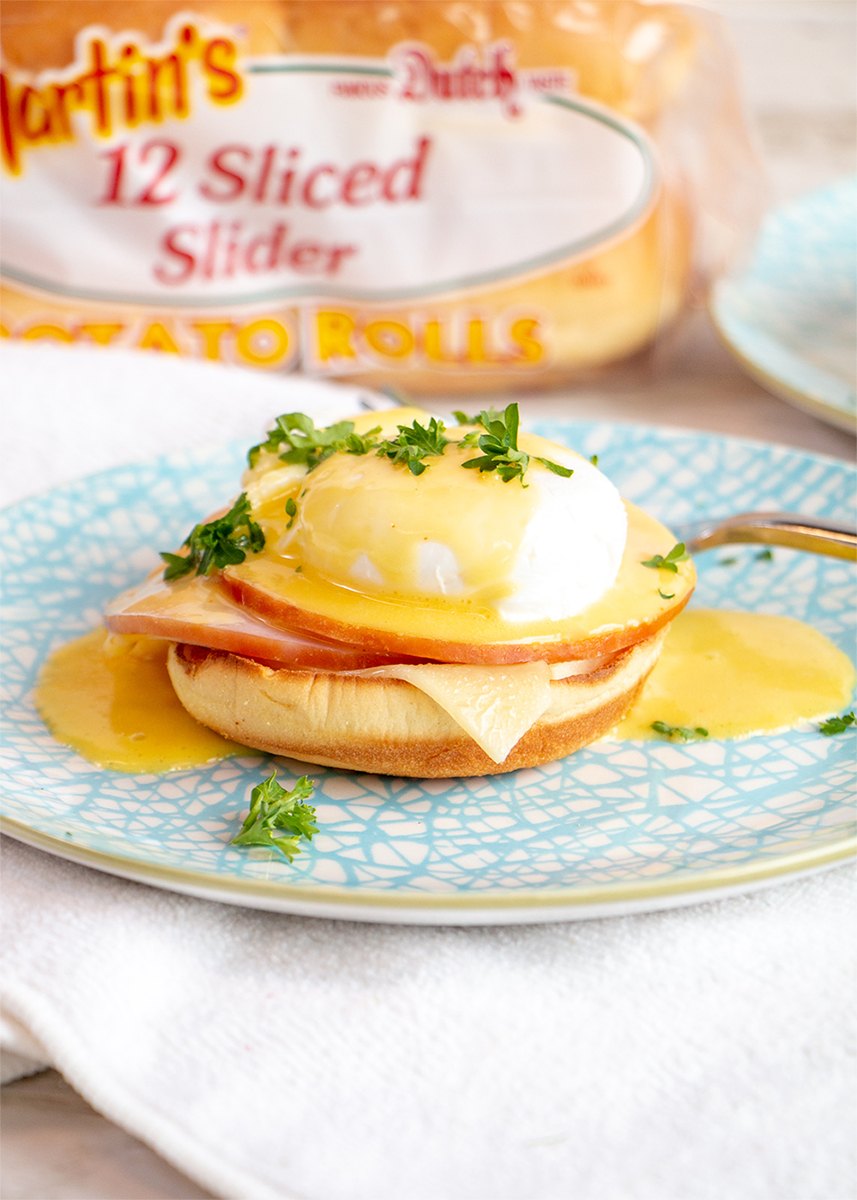
View Full Recipe: https://potatorolls.com/recipes/classic-eggs-benedict
Tips for Poaching Eggs
- Crack each egg into a ramekin first before adding to the boiling water.
- Adding a bit of vinegar to the boiling water helps the egg whites stay together.
- Swirl the boiling water around the pot to create a “whirlpool” then add your egg into the center. This helps the loose egg whites wrap around the egg as it starts to cook.
- Remove the poached eggs with a slotted spoon to allow the water to drain.
- Trim excess trailing egg whites with a knife before serving onto your dish.
More Poached Egg Recipes
- Eggs Florentine
- Fried Chicken Benedict
- Smoked Salmon Eggs Benedict (from: The Endless Meal)
- Asparagus Toast with Poached Egg and Warm Bacon Vinaigrette (from: Feasting at Home)
Baked/Shirred Eggs
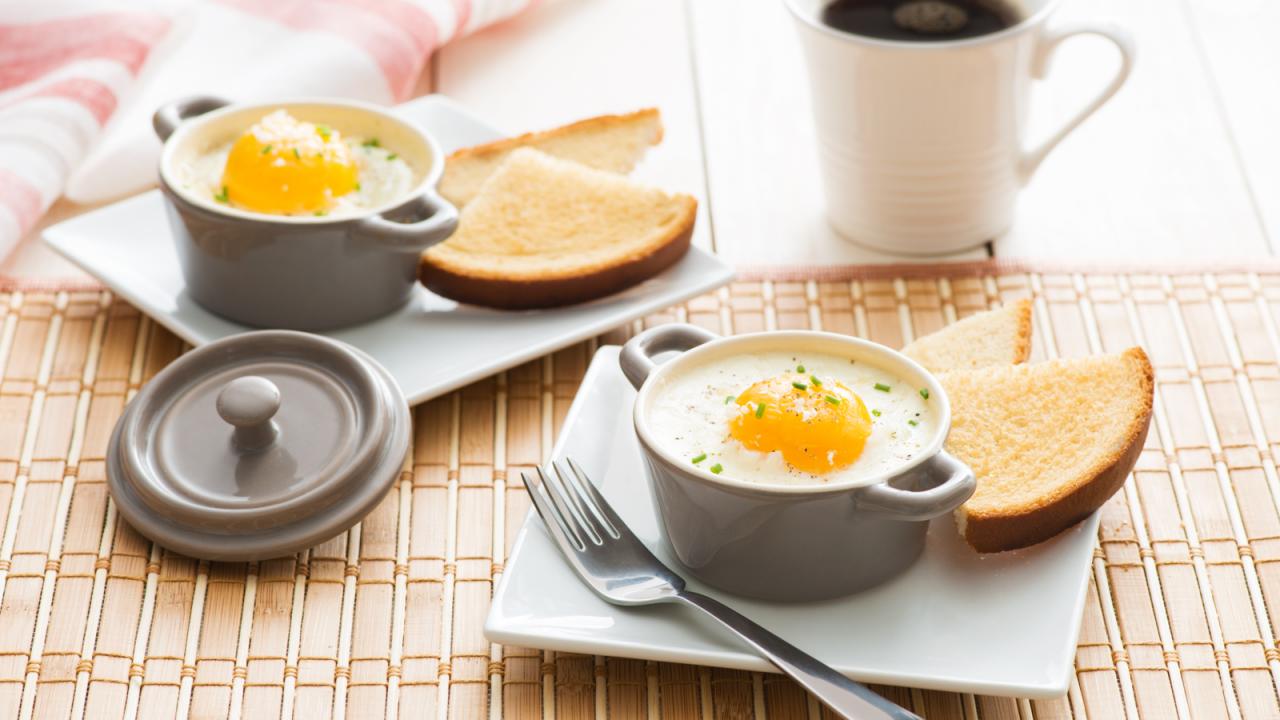
Image from Egg Farmers of Canada
This is just what it sounds likes—eggs baked in the oven. “Shirred” refers to the vessel that was traditionally used to prepare these eggs, but nowadays it is common to use mini ramekins or similar dishes for single servings of baked eggs. There are also many other varieties of baked eggs that include other ingredients—see a few in the list below.
Types of Baked Eggs
- Classic Baked/Shirred Eggs: Eggs baked in ramekins or small flat-bottomed dishes.
- Eggs en Cocotte: French-style shirred eggs; baked in ramekins and placed into a water bath.
- Shakshuka: A Middle Eastern and North African dish with a tomato and vegetable base. The eggs are cracked into divots in the sauce and poached or baked until set.
- “Eggs in Purgatory” or Spanish/Portuguese/Italian-Style Baked Eggs: Similar to shakshuka, with different flavors and spices depending on the type of cuisine.
Tips for Baking Eggs
- Crack an egg into a buttered 4-oz ramekin; top with heavy cream and other desired mix-ins; bake 8-10 minutes at 350-375, checking often. Optional: place ramekins in water bath.
- Try this basic shirred egg technique from Egg Farmers of Canada, (pictured above).
Baked Egg Recipes
- Sheet Pan Eggs-in-a-Hole
- Ham Asparagus and Cheese Strata
- Portuguese Baked Eggs (from Bon Appetit)
Additional Egg Resources
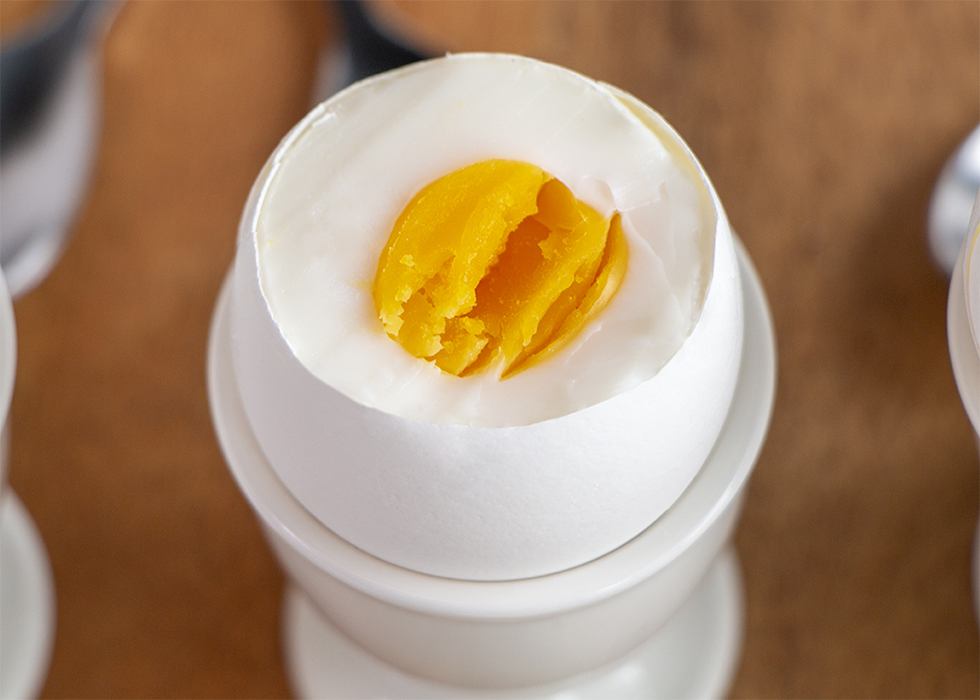
Here are some additional resources you may like:
- Check out The Definitive Guide to Eggs from Serious Eats for a ton of additional recipes, tips, and video tutorials on all the preparations mentioned here (plus a few others).
- You can find a variety of helpful recipe videos for all of these egg cooking methods and more, from Chef Curtis Stone on Youtube here: Easy Breakfast Ideas.
- The blog Breakfast with Nick provides a helpful breakdown of 11+ ways to cook eggs, with additional distinctions, variations, and cooking tips if you’re looking to enhance you egg skills even further.
What’s your favorite technique for cooking eggs? Let us know in the comments section below, or follow us on social media!
Our latest content, delivered straight to your inbox.
Be the first to hear about our newest recipes, tips, and company updates!

